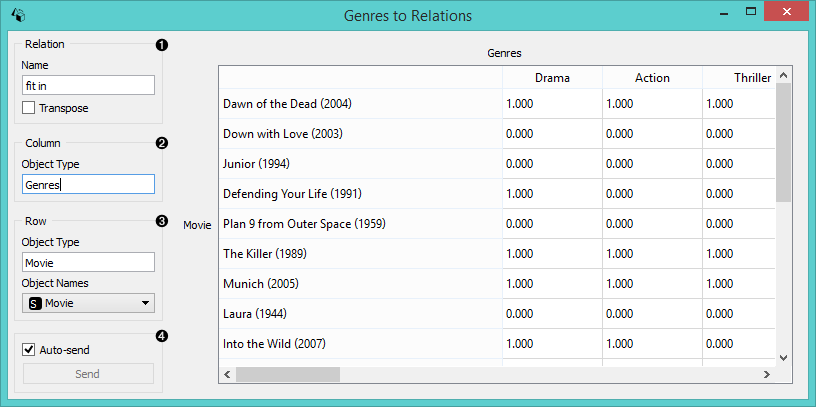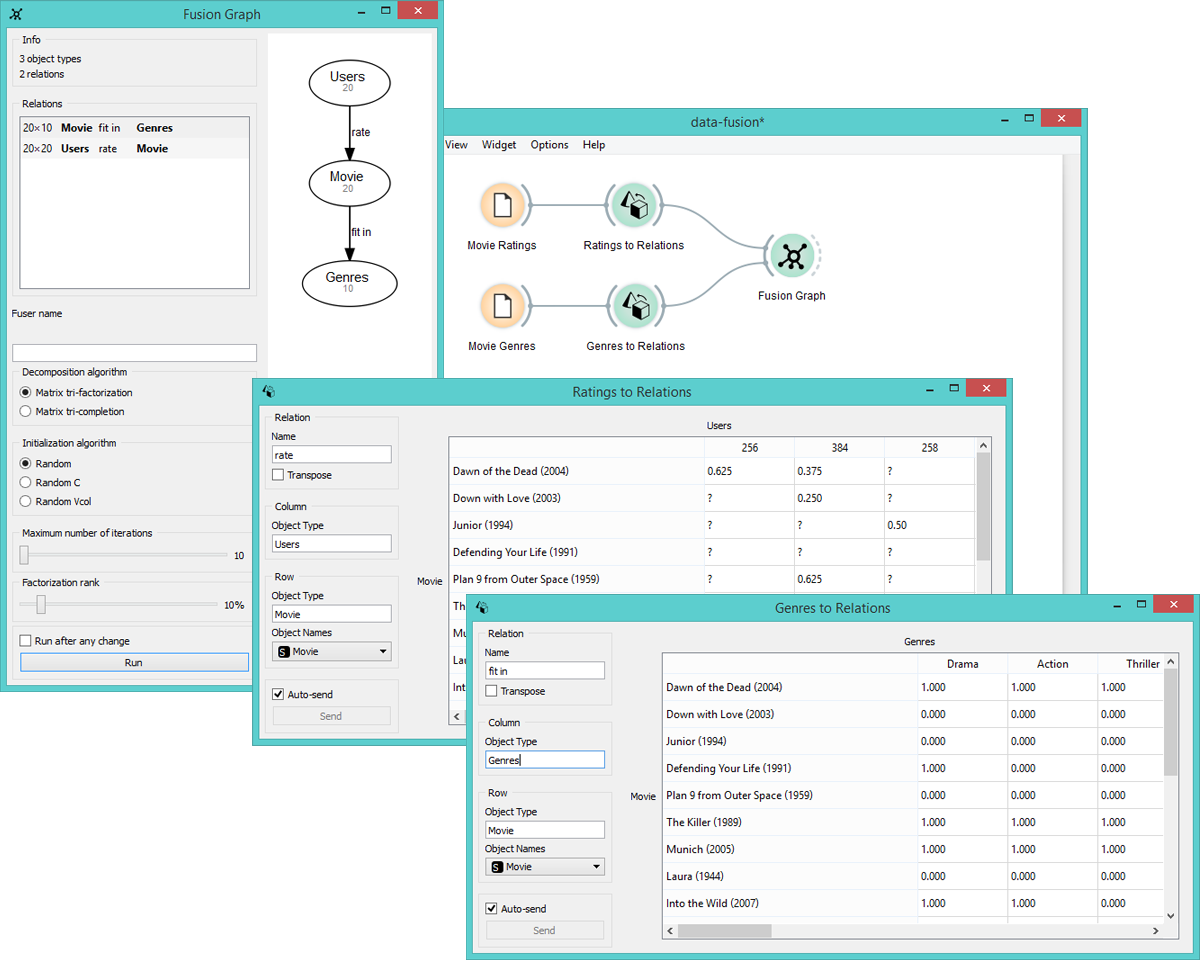Table to Relation¶

Converts a data table into a relation matrix. Labels objects in rows and columns of a relation matrix.
Signals¶
Inputs:
Data
Attribute-valued data set.
Outputs:
Relation
Relationships between two groups of objects.
Description¶
Table to Relation widget is probably the most often used widget in the data fusion set. It allows you to define relations just by labeling the axes. Your data set from the File widget will be transformed into a relation matrix, which can be later fused together with other relation matrices into a collective latent data model.

- Provide a descriptive name for the relation. Option *transpose* will shift the axes.
- Label the object type in columns. Your entry will be displayed on top of the table. Note that the labels are case-sensitive.
- Label the object type in rows. If there is a label present in the data, it will be used as default.
- If Auto send is ticked, your changes will be communicated automatically. Alternatively click Send.
Example¶
In the example below we took two regular files with data on movie ratings and movie genres and fed them into separate Table to Relation widgets. In these widgets we specified the relations contained in the data and named the axes accordingly. See how Fusion Graph is then able to organize data sets into a relational graph, i.e. a data fusion graph, simply on the basis of axes names?
